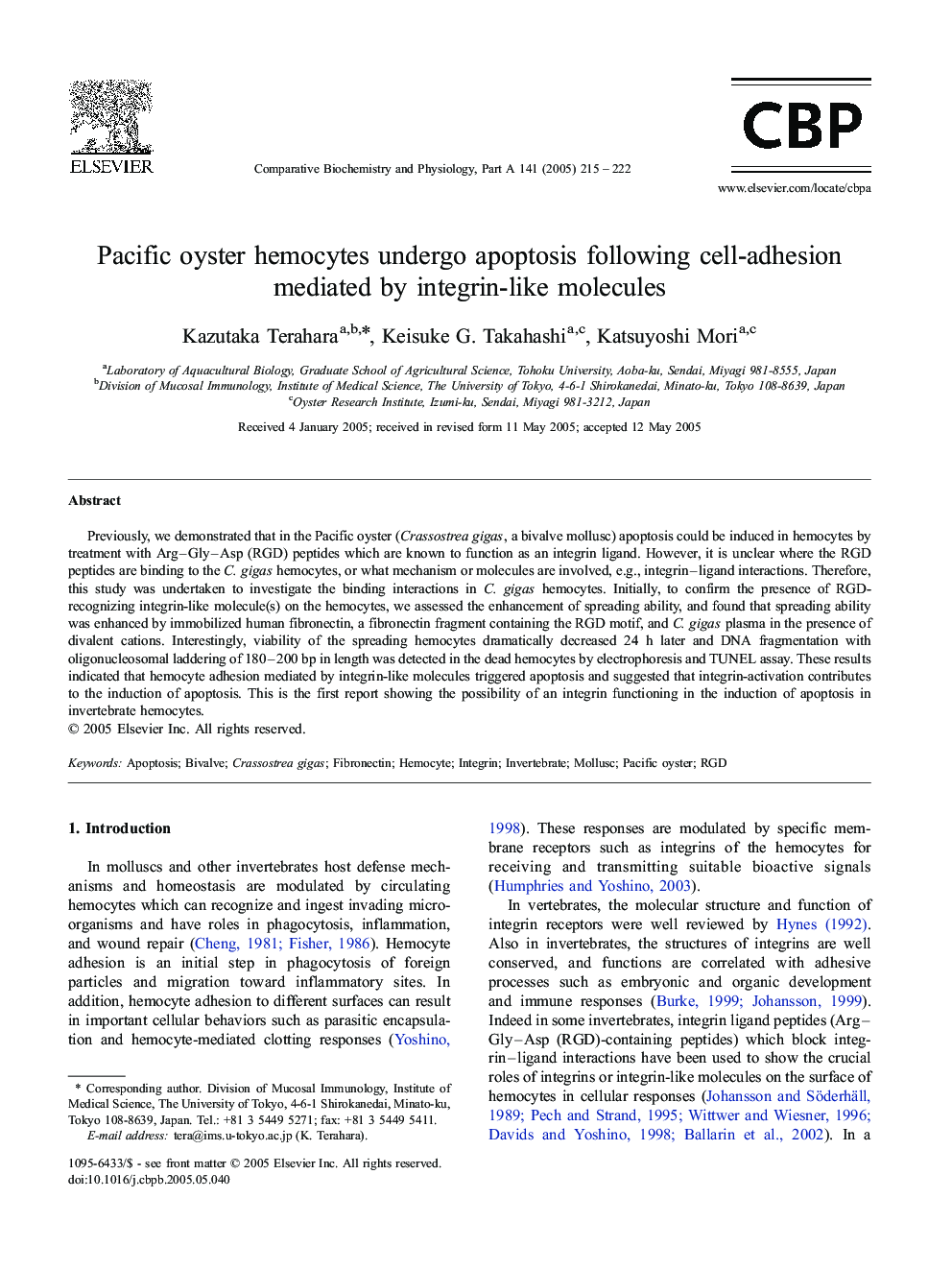| Article ID | Journal | Published Year | Pages | File Type |
|---|---|---|---|---|
| 10819203 | Comparative Biochemistry and Physiology Part A: Molecular & Integrative Physiology | 2005 | 8 Pages |
Abstract
Previously, we demonstrated that in the Pacific oyster (Crassostrea gigas, a bivalve mollusc) apoptosis could be induced in hemocytes by treatment with Arg-Gly-Asp (RGD) peptides which are known to function as an integrin ligand. However, it is unclear where the RGD peptides are binding to the C. gigas hemocytes, or what mechanism or molecules are involved, e.g., integrin-ligand interactions. Therefore, this study was undertaken to investigate the binding interactions in C. gigas hemocytes. Initially, to confirm the presence of RGD-recognizing integrin-like molecule(s) on the hemocytes, we assessed the enhancement of spreading ability, and found that spreading ability was enhanced by immobilized human fibronectin, a fibronectin fragment containing the RGD motif, and C. gigas plasma in the presence of divalent cations. Interestingly, viability of the spreading hemocytes dramatically decreased 24 h later and DNA fragmentation with oligonucleosomal laddering of 180-200 bp in length was detected in the dead hemocytes by electrophoresis and TUNEL assay. These results indicated that hemocyte adhesion mediated by integrin-like molecules triggered apoptosis and suggested that integrin-activation contributes to the induction of apoptosis. This is the first report showing the possibility of an integrin functioning in the induction of apoptosis in invertebrate hemocytes.
Keywords
Related Topics
Life Sciences
Biochemistry, Genetics and Molecular Biology
Biochemistry
Authors
Kazutaka Terahara, Keisuke G. Takahashi, Katsuyoshi Mori,
